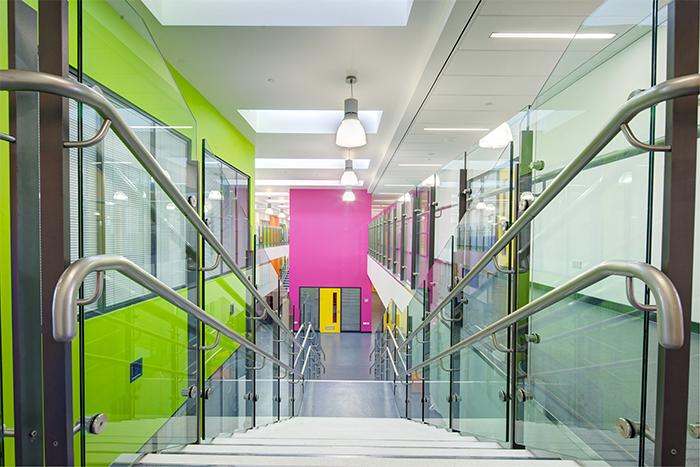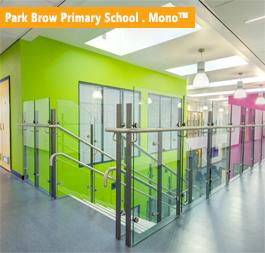Balustrade Specifications for Education
Posted on 8th June 2018The trend towards open plan layouts with greater visibility of student movement has significantly increased the use of balustrade systems within the Education Sector.
Failure to ensure your balustrade system is compliant with BS6180:2011 is not only a regulatory issue, as an inadequate balustrade can create a health and safety hazard.
Delta Balustrades have supplied over 45,000 m’s of balustrades to Schools, Colleges and Universities throughout the UK. As balustrade experts we’ve put together considerations when working on Education projects.
Design
It’s important to consider the buildings use and its users in relation to the positioning of balustrade and handrail systems.
Education facilities are busy places with hundreds of students, plus staff, moving about the building daily. Areas such as atrium’s may become overcrowded and stairways will see an influx of several users at a time.
ESFA Design Brief considerations include:
- Contractors to ensure that all New Buildings and Grounds are designed to include suitable guarding and barriers where there is a risk of falling
- Lockers are not to be placed alongside guarding or balustrades to prevent the restriction of movement along main circulation routes
- Ensure physical barriers do not obstruct views towards or away from School Buildings and Grounds
Loadings
To fulfil its role, a balustrade system needs to withstand substantial loadings to protect pupils from unsafe heights.
Early engagement with your architect and supplier will help establish the loadings required for the different areas of the building and can prevent costly changes to design.
- Areas with stairs, landings and corridors must withstand a line load of 0.74kN/m and a 0.5kN/m point load.
- Areas susceptible to overcrowding, such as atriums, must withstand a line load of 1.5kN/m under 3m’s wide and 3.0kN/m over 3m’s wide and a point load of 1.5kN/m.
Fixings
Early engagement also enables our design team to ensure the fixings supplied for your balustrade and handrail system are suitable to the substrate upon which they will be fixed.
- Fixings should be supplied to withstand higher loadings than the minimum requirements of BS6180 (noted earlier).
- Ensure your balustrades are fixed to the most substantial substrate. We suggest leaving a 300mm gap from the edge in the screed to allow balustrades to be firmly fixed into the structural concrete (concrete should be to BS EN1992 standard), allowing you to fill in around the posts after installation.
- For balustrades that require a side fixing, ask your metal frame fabricator to add additional steel plates to fix to, saving them a return visit during balustrade installation.
Infill
The most popular infill for Education facilities is glass, due to its ability to give higher visibility of student movement.
- Glass infills should be toughened, heat-soaked glass, so that in the case of a breakage the glass will break safely into small pieces rather than shards which can cause injury.
- Recommend bolt through lugs as a safety precaution when fixing glass infills. Traditional clamp lugs may lead to glass slippage over time, which can present a health and safety hazard as well as costly replacement for slipped infills. Bolt through lugs are standard at Delta Balustrades.
Balustrades and handrails are a critical safety structure in any educational building and considerations regarding the health and safety of children should be paramount.
Always choose a balustrade supplier with the expertise of your projects sector and don’t forget to check the balustrades and handrails supplied meet with the demands of BS6180.
You can contact us at info@deltabalustrades.com with any questions.


